As COVID-19 spread quickly in South America, rapidly transforming it into an epicenter of the pandemic and drastically affecting its economy, the number of people experiencing severe food insecurity in the region grew substantially. The forecasted contraction of the regional economy for 2020, estimated at 9.4%, will be the biggest drop in the region’s history, hitting hardest those who rely on daily earnings in the informal sector. Indigenous peoples and rural communities in the region are at especially high risk from COVID-19 because of factors such as discrimination, social exclusion, land dispossession, and a high prevalence of forms of malnutrition, with climate change compounding many of these causes of health inequities. The nature and extent of the effects of COVID-19 on indigenous and rural farming food systems is still largely unknown, but the direct results include mortality from severe illness, reduced access to food, changes in local diet, and economic losses resulting from lockdowns. These outcomes present impediments to the recovery of communities already facing substantial challenges.
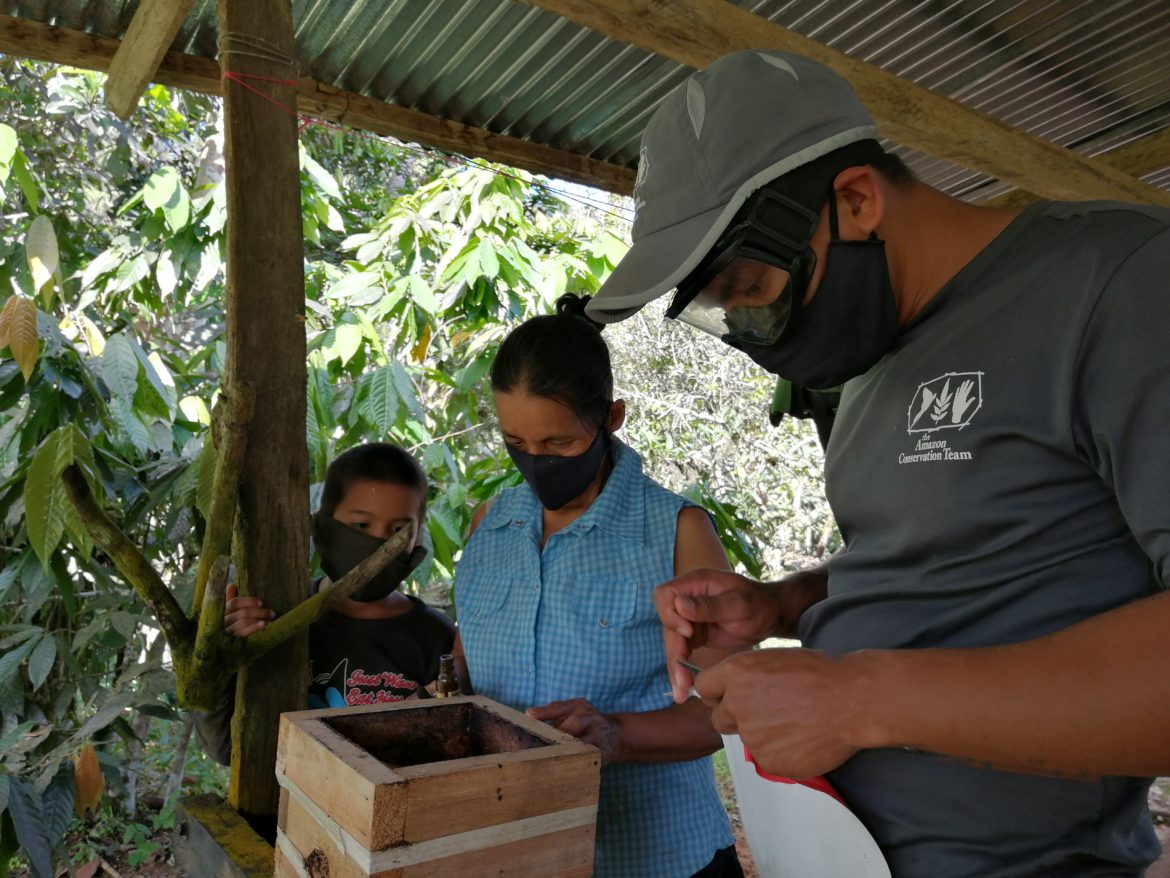
In Colombia’s Andean Amazon, the Amazon Conservation Team (ACT) has been working for more than two decades with indigenous and rural communities on strengthening food systems through agroforestry practices—the integration of trees and other woody plants with crops and livestock systems—due to its strong potential to help address food insecurity problems. Done well, it allows communities to make the best use of their land, boosting field crop yields, diversifying income, and increasing resilience to climate change. The COVID-19 pandemic made even more evident the benefits of developing strong agroforestry systems, with indigenous and rural communities that had incorporated such practices better able to weather the impacts of the pandemic. María Patricia Navarrete, Coordinator of ACT’s Fragua-Churumbelos and Lower Caguán River program, spoke with us about ongoing efforts to strengthen food sovereignty in the Andean Amazon.
How did things begin to unfold in Colombia’s Andean Amazon at the start of the pandemic?
Things at the start were taken somewhat lightly, with the impression that the disease was something distant, in China and Italy. On March 7, I traveled to Florencia, the largest town in the region, to begin planning an international workshop in neighboring local communities. There, while doing fieldwork and preparing for the workshop, we were notified of the first case in Colombia. Things began to get serious around the 14th-15th of March, and I decided to convene some of the ACT staff in the Andean-Amazon and begin implementing social distancing and cleanliness measures in the regional office. It was alarming to see what was happening in nearby Ecuador, and I also received some frightening reports from other areas of Colombia.
Once things began to get critical in the Amazon, what did you and the team decide to do?
We’re about 20 people in ACT’s Andean Amazon team; some are located in Florencia, while others are based in more remote areas. As reports came in that things were unraveling rapidly, we immediately met with local community partners, seeing that the impact of the pandemic was going to be long-term. With the communities, we decided to quickly plan crops, such as açaí, plantain, and cacay, in agroforestry corridors, so that once the emergency begins receding, these plants already have had time to grow and develop. On March 16, as the Colombian government was beginning plans for mandatory quarantine throughout the country, we began to locate some of the staff in the field, as some were located in remote areas without cellphone signal.
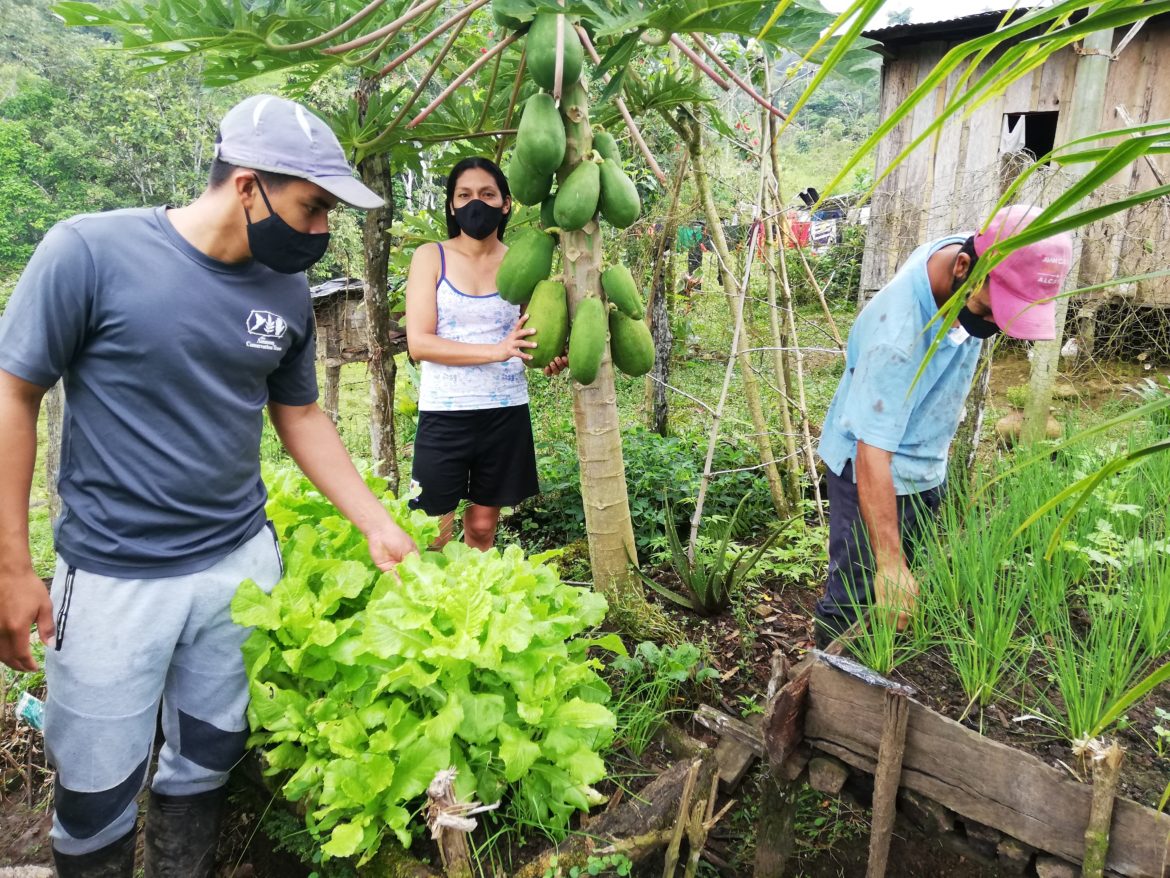
People were starting to panic in the towns, Florencia being one of the first to close its borders. I went back to my family’s home in Cali, Colombia, and have been working here since then. We wanted to have all the personnel safe in Florencia, but as some already resided in the rural and remote areas as local promoters and field staff, ACT’s fieldwork in indigenous and local communities was able to continue relatively smoothly. We began developing a biosecurity protocol, sending them personal protective equipment and medical hygiene supplies, and provided them guidelines on how to navigate this whole event with their respective partner community. In Florencia and the larger towns, we began to use this time to create technical guides on land restoration and agroforestry, and to analyze 170 land use plans.
After the initial scare, what’s been going on?
Luckily, we were able to have some of the technical staff return to the field on July 18, where they spent 14 days in quarantine before taking on any work. With permission from local municipalities, as well as the local rural farming and indigenous organizations, the technical team was in the field until the end of August providing assistance to communities. We also did some analyses of sustainable income generation, and found that partner families were able to substantially increase the products sold at markets, from five to twenty-five products, generating a meaningful additional source of income. Even during these times of COVID-19, families have been able to sell some of the products in the town centers, generating crucial income. Ultimately, this crisis delayed some of our timelines, but we were able to advance and reflect in several ways.
Thank you for providing this overall context. Could you tell us a bit more about food security and sovereignty efforts in the region and the ways they tie to the COVID-19 pandemic.
As soon as the crisis began, we took inventory of and analyzed the food security situation of the partner families and communities that ACT has been working with for decades. With help from the staff in the field, we were able to conduct interviews, compile information, and build a dataset that includes the food and crops that are available to each family, village community, or indigenous reserve. Through this analysis, we found that people have food available and that no one was going to bed hungry. At the same time, there were some important supplies that became limited, such as rice, due to the remoteness of the region. But overall, the indigenous and rural communities we’ve been working with have food, and we are very happy to see this. Since we began working in the region, we’ve emphasized food sovereignty, sustainable livelihoods, and forest restoration. The message to the communities has always been that they need to have food for their families by recovering native seeds and plants, as well as by focusing on traditional agriculture, and we’re glad to see that indigenous and rural people have been able to create sustainable food systems that can be resilient in this time of crisis. Additionally, families have clean and sustainable sources of water.
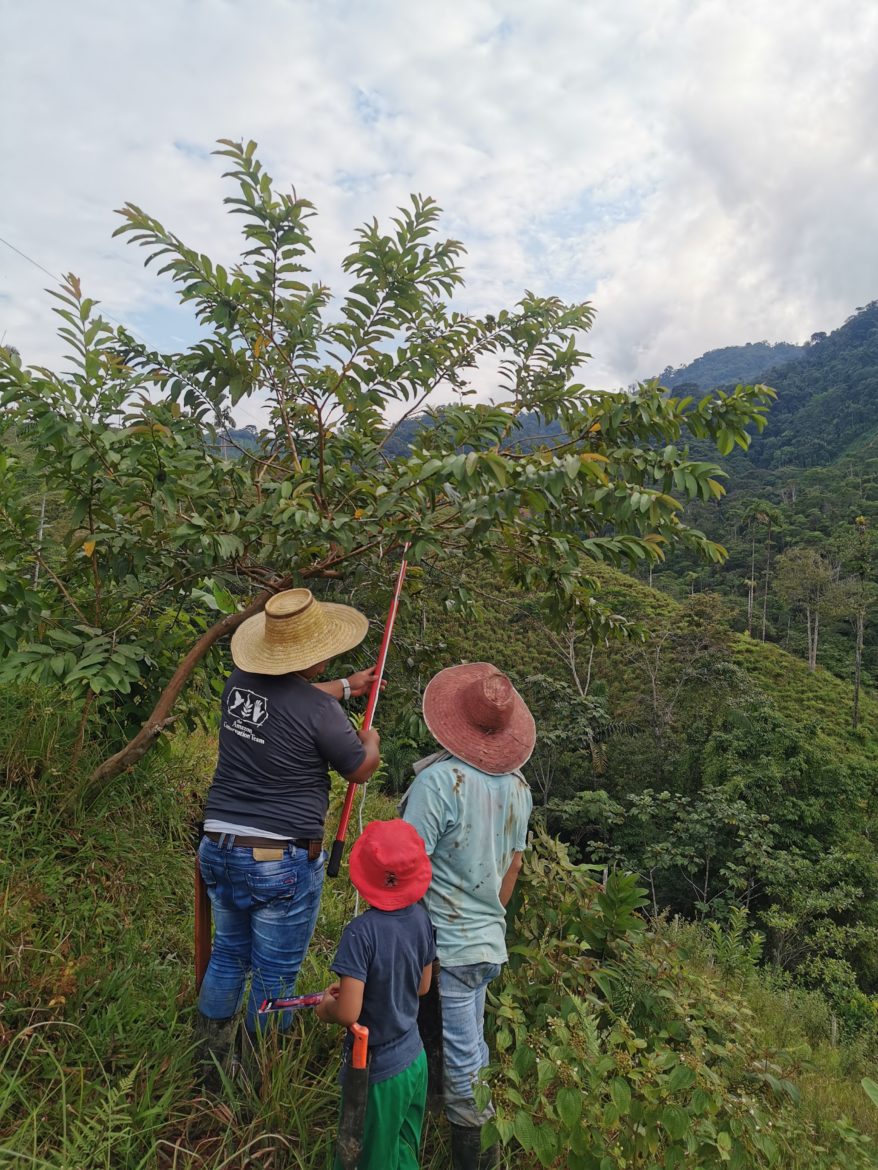
Something that we defined with the field staff is that every time they do a site visit, they need to first, have biosecurity protocols in place; second, emphasize the protection of native seeds, as well as water sources, and promote food sovereignty; and third, compare the baseline in the communities with the status in the cities and towns of the region that are wholly dependent on food and don’t have clean sources of water. It’s important to note that 80% of the food in Caquetá is imported, so it’s not only a food crisis in the urban sector, but in rural areas as well. We’re glad to see that partner communities have sustained during this crisis relatively well. In this period of time, we’ve heard from families that they now want to stay in lands that they had previously considered selling, seeing as they have ample space, clean water, and sustainable food systems. It’s helped us to reflect on the work that has taken place in the region during the crisis. We’re now designing communications materials that showcase the importance of planting native seeds, taking care of water sources, et cetera, and that compare it with life conditions in the city as well as unsustainable agricultural practices.
So it seems that ACT’s support has been quite successful—even during a pandemic, partner communities have sustainable food systems. What do you believe is missing, or are there any next steps you see on the horizon?
I believe that an important next step is to strengthen the improvement of marketing and commercialization of agroforestry products. We’re very strong in the technical part, but that is certainly a gap at the moment. I also see potential in sustainable timber production, in having communities and families aware of the value that these trees have in the long term rather that chopped down for a low return on investment.
Share this post
Bring awareness to our projects and mission by sharing this post with your friends.



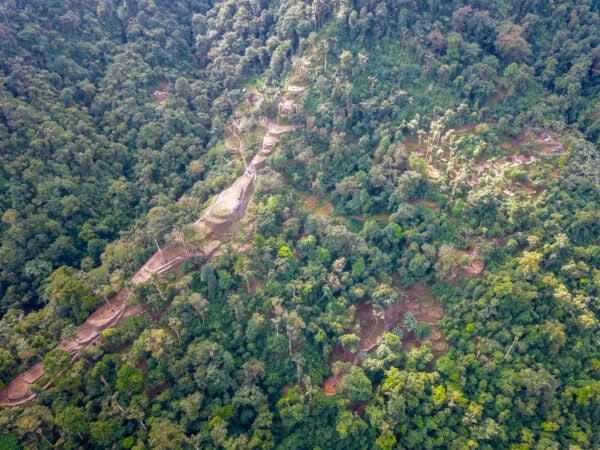
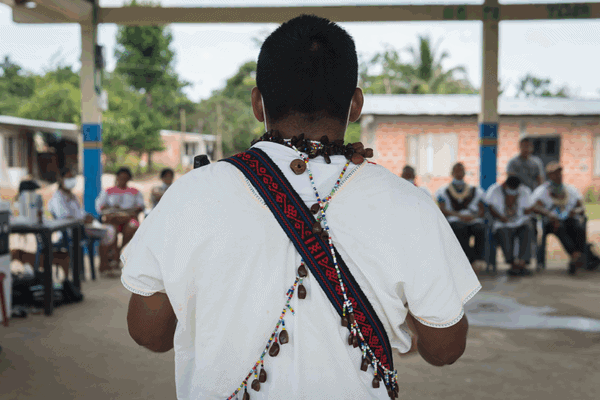
[…] and the continent faces the worst of both worlds: a heavy human toll and crippling economic damage. With a predicted reduction of Gross Domestic Product (GDP) for 2020 of 9.4%, South America’s fall in economic activity is of such a magnitude that its GDP per capita will […]
Very crucial work. Can you refer me to or tell me where I may access more information on food security and vulnerable populations? Is there actually protocol that are in place for crisis’ such as the present?
[…] livelihood for traditional communities living in the forest, across its programs in Suriname, Colombia and Brazil. These initiatives have promoted the use of honey and propolis as a medicine and food, as […]